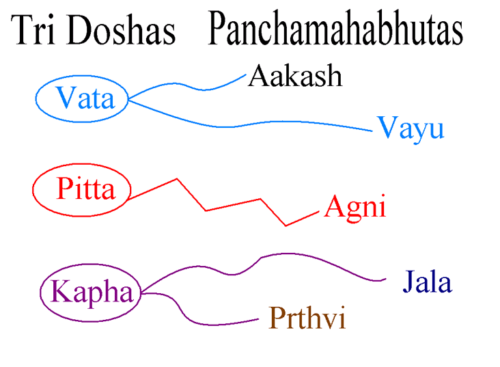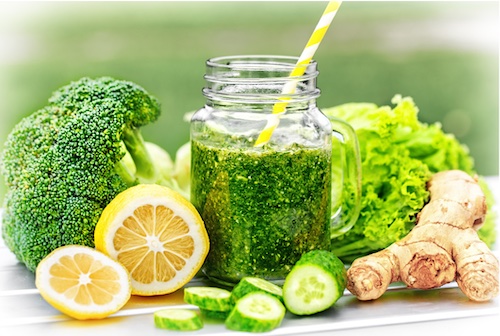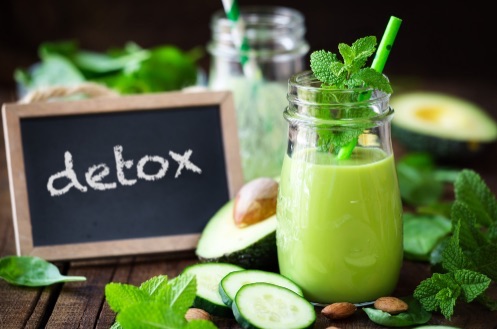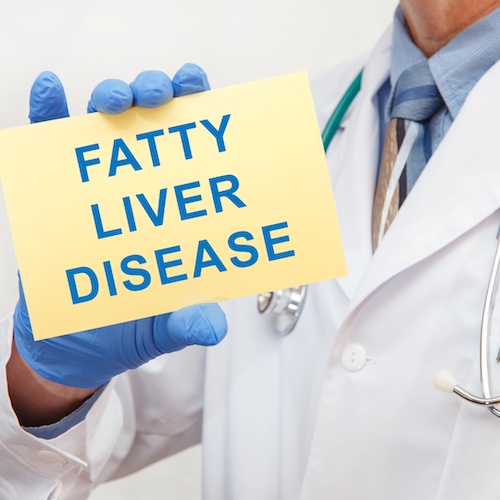An Ayurvedic liver detox aims to cleanse and rejuvenate the liver using natural methods based on the ancient Indian holistic healing system.
Table of content
Understanding the Ayurvedic Perspective on Liver Health
Consume Ayurvedic Liver Detox Diet
Use Ayurvedic Herbs for Liver Detox
Adopt Ayurvedic Lifestyles for Liver Cleanse
Panchakarma best Ayurvedic liver detox
How to do Ayurvedic Liver Detox at Home?
The liver is a vital organ in the human body, responsible for numerous essential functions like detoxification, metabolism, and nutrient storage. With increasing exposure to environmental toxins, unhealthy lifestyle habits, and poor dietary choices, maintaining liver health is crucial.
Knowingly or unknowingly we tax our livers with loads of toxins. These toxins enter our bodies through water, air, and food. Apart from these junk foods, alcohol, tobacco, processed foods, medicines, etc burden the liver. This vital organ which is a large chemical factory of our body gets tired of cleaning these toxins. It too needs an overhaul like any other machine. This detox helps in conditions like fatty liver. Read Ayurvedic Remedies for Fatty Liver Disease
Understanding the Ayurvedic Perspective on Liver Health
In Ayurveda, the liver is considered the seat of the Pitta dosha, which governs digestion, metabolism, and transformation processes in the body. The liver is known as yakrut or jyothisthana in Ayurveda. When there is an imbalance in Pitta dosha, it can manifest as liver disorders or reduced liver function. The primary goal of an Ayurvedic liver detox is to restore balance to the Pitta dosha and promote optimal liver function. According to Ayurveda acharyas, this organ has to be kept clean and toxin-free to maintain the optimum levels of body functions.
Ayurveda, an ancient Indian holistic healing system, offers natural ways to detoxify and rejuvenate the liver. This comprehensive guide explores the principles and practices of an Ayurvedic liver detox to help you achieve optimal liver health.
It involves a combination of dietary changes, herbal remedies, and lifestyle modifications. Remember, it’s essential to consult with an Ayurvedic practitioner or a healthcare professional before starting any detox program.
Here are some general steps to perform an Ayurvedic liver detox:
Determine Your Dosha

In Ayurveda, each person has a unique constitution based on three doshas – Vata, Pitta, and Kapha. These doshas are in different proportions in different people. Before starting an Ayurvedic liver detox, it’s essential to determine your unique constitution, or prakriti, which consists of these three doshas. Knowing your dosha will help you select the most suitable foods, herbs, and lifestyle practices for your detox.
Consume Ayurvedic Liver Detox Diet:

A balanced, nutritious diet is crucial during an Ayurvedic liver detox. Emphasize whole, natural foods, and minimize processed, fatty, or sugary items. Include liver-supportive foods and follow these dietary guidelines:
During the detox, consume a balanced diet consisting of whole, natural foods. Avoid processed, fatty, or sugary foods. Opt for organic fruits, vegetables, whole grains, and legumes. Include liver-supportive foods such as leafy greens, beets, turmeric, and ginger.
Eat a whole lot of green vegetables. Include green leafy vegetables like lettuce and cruciferous vegetables like broccoli and cauliflower in the diet. Avoid saturated fats and refined flour.
Add garlic to your daily recipes. Garlic helps to detoxify the liver and reduce the inflammation of cells. Garlic helps the liver produce essential enzymes which play an important role in detoxifying the blood.
Include bitter vegetables like Karela ( bitter melon or bitter gourd ) in your diet. Bitter melon is known to detox the liver and purifies the blood. Its consumption helps to increase skin glow and reduce wrinkles and acne.
Adopt juice fasting once in 15 days. Drink plenty of fresh fruit juice with a dash of lemon. Lemon is the best detoxifying agent. A glass of warm water with a teaspoon of lemon juice squeezed into it each morning should be enough to have a positive impact.
Drink green tea twice or three times a day. Green tea has plenty of antioxidants and lowers the risks of liver diseases.
Use Indian borage or Ajwain Leaves in salads. This herb is the best liver detox agent.
Drink plenty of warm water throughout the day to help flush out toxins. You can also drink herbal teas like dandelion, milk thistle, or licorice to support liver function.
Use Ayurvedic Herbs for Liver Detox

Ayurveda recommends various herbs to support liver function and detoxification. Some popular Ayurvedic herbs for liver health include:
Triphala:
A combination of three fruits (amla, haritaki, and bibhitaki), Triphala is a powerful antioxidant and digestive tonic. It is a popular Ayurvedic remedy for liver detoxification. Take it as a supplement or in the form of tea.
Bhumyamalaki (Phyllanthus niruri):
Known for its hepatoprotective and detoxifying properties, Bhumyamalaki supports liver regeneration and bile production.
Bhumyamalaki has been shown to help cleanse the liver and support its detoxification process. The herb can stimulate the production of bile, which aids in the digestion and absorption of fats and fat-soluble vitamins, and helps eliminate toxins from the body.
Bhumyamalaki contains compounds that exhibit antioxidant, anti-inflammatory, and antiviral activities, protecting the liver against damage caused by toxins, infections, or inflammation. The herb can help prevent liver damage and support liver regeneration.
Bhumyamalaki has been traditionally used in Ayurveda for the treatment of various liver disorders, including hepatitis, fatty liver disease, and jaundice. Its antiviral properties can help fight hepatitis B and C infections, while its anti-inflammatory effects can help reduce inflammation in liver tissue.
By stimulating bile production and flow, Bhumyamalaki can help prevent the formation of gallstones and support gallbladder health. Read
Kutki (Picrorhiza kurroa):
Kutki, also known as Picrorhiza kurroa, is a perennial herb native to the Himalayan mountains and has been a cornerstone of traditional Ayurvedic medicine for centuries. Renowned for its potent healing properties, Kutki holds a special place in Ayurveda for its role in liver detoxification.
Kutki contains two key active compounds: kutkin and picroside, which are believed to promote liver health. These compounds, particularly kutkin, exhibit hepatoprotective properties, meaning they help shield the liver from damage. In essence, they stimulate the liver to produce bile, thereby aiding in the breakdown and removal of harmful substances from the body.
In addition to detoxifying the liver, Kutki is known to reduce inflammation within the liver and surrounding tissues. It achieves this by inhibiting the production of inflammatory cytokines, which contribute to liver inflammation and injury. As a result, Kutki not only detoxifies the liver but also promotes its overall health and function.
This herb has anti-inflammatory and antioxidant effects, making it beneficial for liver detoxification and protecting against liver damage. Read Health Benefits of Kutki – Liver detox and Fatty Liver
Guduchi (Tinospora cordifolia or Giloy):
Guduchi is an adaptogen that helps the body cope with stress and supports liver function. It also has anti-inflammatory and immune-modulating properties. Giloy or guduchi is an Ayurvedic herb that is eulogized as amruta in Ayurveda. Amruta means elixir. Giloy helps to expel toxins from the liver and reduce blood glucose levels, the best herb to reduce the blood uric acid level, and boost immunity.
Crush around 5 to 6 juicy leaves of giloy. wash these leaves before use. Extract this juice (around 10 ml). Mix this giloy juice with an equal amount of honey. Drink this on empty stomach. Read Health Benefits and Uses of Guduchi or Giloy
Turmeric
Turmeric is known for its liver-detoxifying properties. Ayurveda acharyas recommend turmeric for liver disorders like jaundice. Here is a simple liver detoxification method that can be done at home using turmeric.
Boil a pinch of turmeric in a cup of water. Allow it to cool. Add one teaspoon of honey and ½ teaspoon of lemon juice. Drink this on an empty stomach three times daily. This process not only detoxifies the liver but also helps in weight reduction. Read Ayurveda Health Benefits of Turmeric (Haldi)
Neem
Neem is praised as a blood purifier. This herb helps to cleanse the liver and reduce its inflammation. Many ayurvedic doctors use neem while treating fatty liver.
Wash a handful of neem leaves. Crush these to extract juice (around 10 ml). Mix this juice with an equal amount of honey. Drink this on empty stomach. Read Ayurveda Health Benefits and Uses of Neem
Tulsi
Tulsi plant is worshipped in every Hindu household. This plant comes in handy in many home remedies for cough, cold, skin, and liver problems. Usually, this herb is administered along with giloy and neem.
Bhringraj (Eclipta Alba )
Bhringraj has properties that are beneficial for the liver. It contains plenty of antioxidants that lower the toxic load on the liver. This improves the overall function of the liver. This herb has anti-inflammatory properties which help in reducing the inflammation of the liver.
According to the texts of Ayurveda Bhringraj balances Vata and Kapha. It normalizes pitta. This also helps in the easy flow of bile. Read Benefits of Bhringraj or Eclipta Alba for Hair, Dandruff, Liver and Skin
Consult an Ayurvedic practitioner for guidance on appropriate dosages and usage.
Adopt Ayurvedic Lifestyles for Liver Cleanse

Incorporating various lifestyle practices can support your liver detox and help maintain optimal liver health. These lifestyles have to be included in Dinacharya or ayurvedic daily routine. Here are some essential Ayurvedic lifestyle practices for liver detoxification:
Yoga
Practicing specific yoga asanas can stimulate liver function, enhance digestion, and promote overall well-being. Include poses such as:
- Bow pose (Dhanurasana) – stimulates the liver and abdominal organs.
- Cobra pose (Bhujangasana) – increases blood flow to the liver and digestive organs.
- Camel pose (Ustrasana) – stretches and stimulates the liver and abdominal organs.
- Seated forward bend (Paschimottanasana) – massages the liver and other internal organs.
- Twists like half lord of the fishes pose (Ardha Matsyendrasana) – help detoxify the liver by massaging and compressing the abdominal organs.
Meditation and breathwork:
Regular meditation and breathwork, such as pranayama, can help reduce stress and promote mental well-being. Reduced stress levels are essential for overall health, including liver function. Practices like alternate nostril breathing (Nadi Shodhana) and Bhramari pranayama can be beneficial during a liver detox.
Abhyanga (Ayurvedic massage):
This massage technique uses warm, medicated oils to stimulate circulation, lymphatic drainage, and detoxification. Sesame oil, sunflower oil, or coconut oil infused with herbs like turmeric, bhumyamalaki, or guduchi can be used for abhyanga. Perform self-massage or consult an Ayurvedic practitioner for a professional massage.
Adequate rest and sleep:
Ensure you get proper rest and at least 7-8 hours of sleep each night. Sleep plays a crucial role in the body’s detoxification process, and poor sleep can negatively impact liver function.
Regular exercise:
Engage in regular physical activity, such as brisk walking, swimming, or cycling, to improve circulation and support the body’s natural detoxification processes.
Manage stress:
Chronic stress can adversely affect liver function. Incorporate stress-management techniques like meditation, deep breathing exercises, and gentle stretching to help your body and mind relax.
Avoid alcohol and tobacco:
Refrain from consuming alcohol and tobacco during the detox period, as these substances can strain and damage the liver.
Maintain a healthy daily routine:
Ayurveda emphasizes the importance of a consistent daily routine (Dinacharya) to maintain balance and overall health. Establish a routine that includes waking up early, engaging in physical activity, eating meals at regular times, and going to bed early.
Panchakarma best Ayurvedic liver detox:
This is an intensive Ayurvedic cleansing process that involves five purification procedures, including therapeutic vomiting (Vamana), purgation (Virechana), enema therapy (Basti), nasal administration (Nasya), and blood purification (Raktamokshana). These therapies should be done under the guidance of a qualified Ayurvedic practitioner.
How to do Ayurvedic Liver Detox at Home?
Here are tips to do ayurvedic liver detox at home
- Consume organic fruits, vegetables, whole grains, and legumes.
- Opt for healthy fats like ghee, olive oil, and flaxseed oil.
- Eat smaller, more frequent meals to avoid overburdening the liver.
- Stay hydrated by drinking warm water throughout the day.
- Incorporate spices like turmeric, cumin, coriander, fenugreek seeds, and fennel to enhance digestion.
- You can drink fresh fruit juice without added sugar.
- Juices of vegetables like karela ( bitter gourd), carrot, beetroot, etc help. Drink these after analyzing your dosha.
- Consume a glass of warm water with a teaspoon of honey and fresh lemon juice, first thing in the morning.
- Exercise daily. Brisk walking for 45 minutes is the best liver detox exercise.
- Reduce stress by practicing deep breathing exercises like pranayama and meditation.
- Sleep well at night. Good sleep helps to rejuvenate the liver.
- Consume LIVOBEAM AYURVEDIC LIVER DETOX CAPSULES formulated and trusted by ayurvedic doctors. It contains liver protective and detox herbs like Kutki, Bhumiamla, Fenugreek, Chitraka, punarnava and Giloy.
Liver Detox in Various Health Conditions
Liver detox can be done for various health conditions too.
In Obesity
The liver and weight gain are interlinked. Weight gain leads to the accumulation of fat in the liver and a toxin-laden, wrongly functioning liver leads to obesity or weight gain. Hence it is very essential to eliminate accumulated toxins when you are on a weight loss program.
To Cleanse Skin
Skin health and Liver function are interrelated. Since both organs are seats of the pitta, the health of the skin depends on the health of the liver. When toxin gets accumulated in yakrut, the twacha or skin is also prone to accumulate them. This leads to loss of skin luster, dark circles, acne, pimple, etc. Hence regular process to eliminate toxins is very important to keep skin healthy and glowing.
In Male Infertility and Sexual Dysfunction
Accumulation of waste in the male reproductive system may impair its functions. Low testosterone levels, low sperm count and motility, Impotence, etc are some of the conditions which may result from toxin accumulation in the male reproductive system. Hence regular detox of yakrut helps in the elimination of toxins from the male reproductive system and is very essential to overcome these conditions and keep up the normal functioning of the male reproductive organ.
Remember to consult with an Ayurvedic practitioner or a healthcare professional before starting any detox program, as they can provide personalized guidance based on your unique needs and medical history.
Reference :
Modulation of Metabolic Detoxification Pathways Using Foods and Food-Derived Components: A Scientific Review with Clinical Application https://www.ncbi.nlm.nih.gov/pmc/articles/PMC4488002/
Efficacy of Phyllanthus niruri on improving liver functions in patients with alcoholic hepatitis: https://www.ncbi.nlm.nih.gov/pmc/articles/PMC8764976/
Non-Alcoholic Fatty Liver Disease (NAFLD) and Potential Links to Depression, Anxiety, and Chronic Stress https://pubmed.ncbi.nlm.nih.gov/34829926/
Neem Leaf ( Azadirachta indica A. Juss) Ethanolic Extract on the Liver and Kidney Function https://pubmed.ncbi.nlm.nih.gov/33859543/
Author: Dr. Savitha Suri – Consultant Ayurvedic Physician




Pingback: Rohitaka Health Benefits and Uses
Pingback: Health Benefits of Chitrak or Chitraka
Pingback: Ayurvedic Remedies for Fatty Liver Disease
Pingback: Health Benefits of Kutki - Liver detox and Fatty Liver
Pingback: How to Detox Male Reproductive System ? Ayurvedic Way
Pingback: Ayurveda Panchakarma Treatment - A Detoxification Therapy
Pingback: Ayurvedic Daily Detox at Home for Weight Loss
Pingback: Erectile Dysfunction or Klaibya -An Ayurveda View - Ayurvedic Remedies and Treatments for Men, Women and Kids
Pingback: Health Benefits of Garlic in Ayurveda
Pingback: Health Benefits and Uses of Bitter Gourd or Bitter Melon (Karela)
Pingback: Licorice or Yastimadhu for Skin Glow, Psoriasis, PCOS and Weight Loss
Pingback: Ayurveda Health Benefits of Turmeric (Haldi)
Pingback: Ayurveda Health Benefits and Uses of Neem
Pingback: Ayurveda Health Benefits and Uses of Tulsi (Ocimum Sanctum )
Pingback: Ayurveda Health Benefits of Bhringraj for Hair, Dandruff and Skin
Pingback: Manifold Wonders of Massage Therapy - In Ayurveda
Pingback: Ayurveda Health Benefits of Jeera or Cumin Seeds
Pingback: Ayurveda Health Benefits of Fennel or Saunf
Pingback: Are Carrots Good For Weight Loss and PCOS ?- Ayurveda View
Pingback: Water - the Elixir of Life- An Ayurveda View
Pingback: Benefits of Brisk Walking
Pingback: Benefits and Uses of Mango Fruit, Leaf , Flower , Bark and Seed
Pingback: Health Benefits and Uses of Pomegranate, Its Peel and Juice
Pingback: Vajikarana Medicines and Vitality Herbs
Pingback: An Ayurvedic Skin Detox at Home
Pingback: Fatty Liver - An Ayurveda View
Pingback: Health Benefits of Coriander/cilantro, seeds, leaves,
Pingback: Ayurveda definition of Mamsa Dhatu ( Muscle tissue )
Pingback: Rakta dhatu (Blood ) in Ayurveda
Pingback: Ayurveda Definition and Functions of Rasa Dhatu or Lymph
Pingback: How to Increase Immunity Through Ayurveda? - Ayurveda Remedies, Tips and Treatment
Pingback: Benefits of ayurvedic daily routine Dinacharya